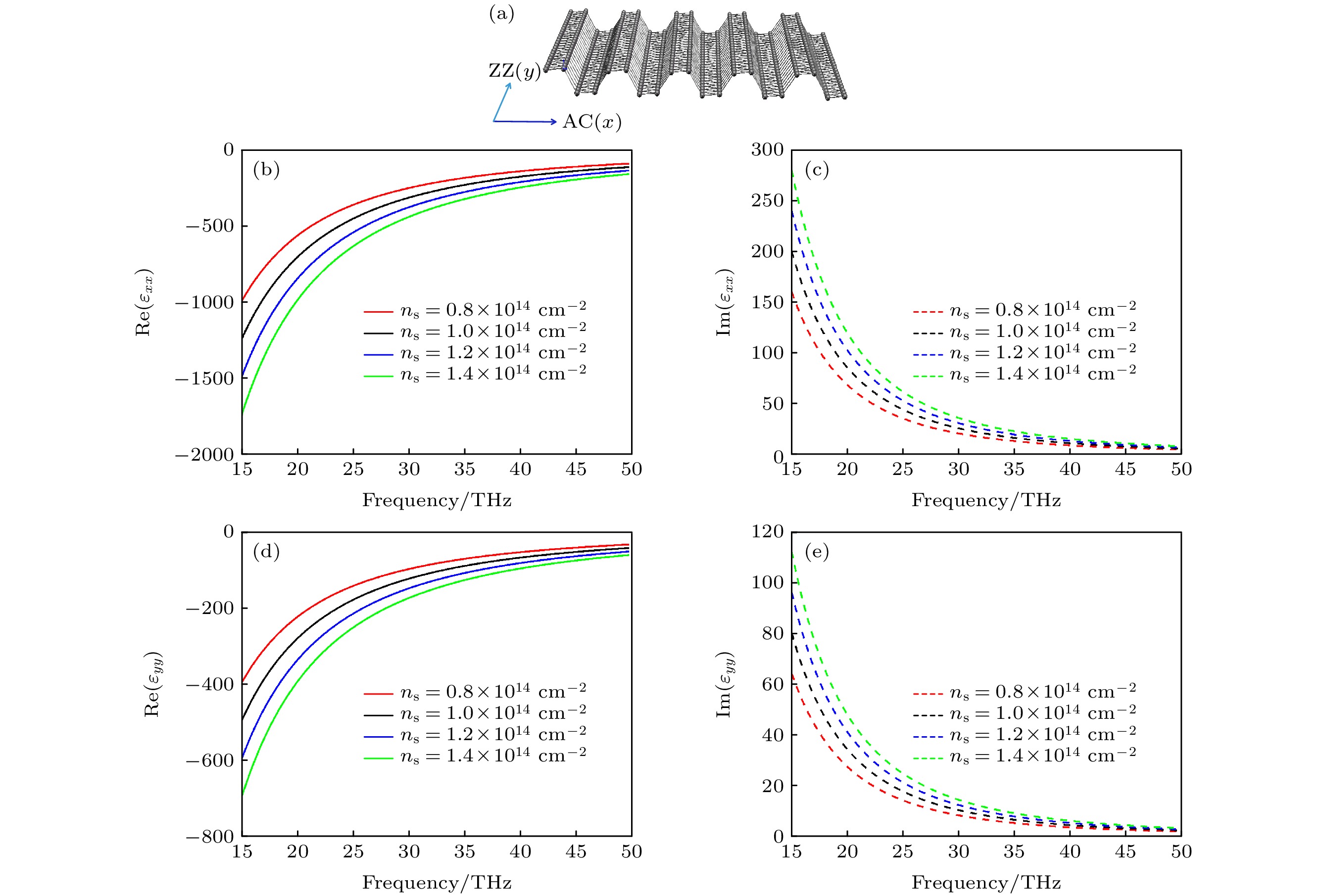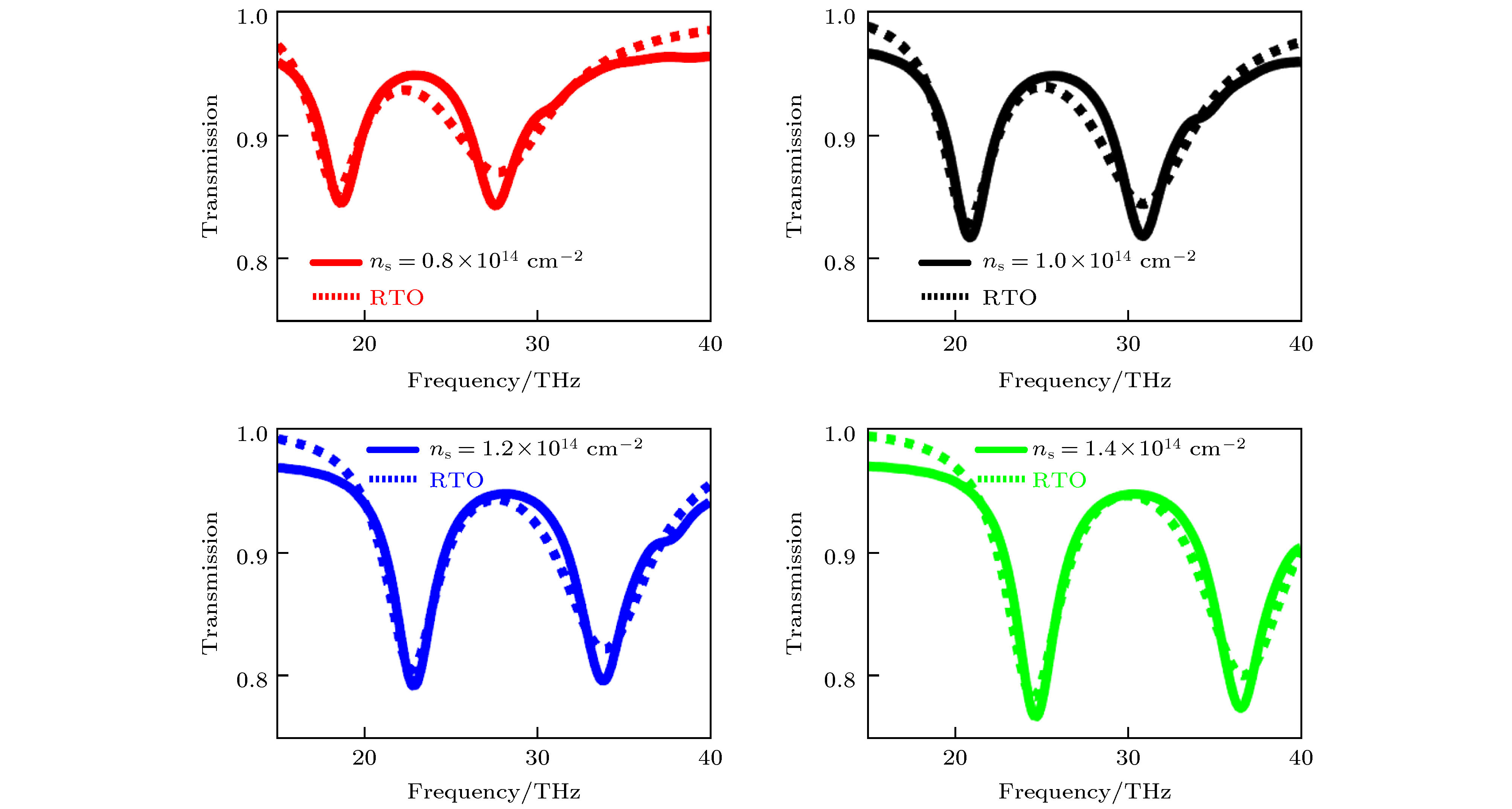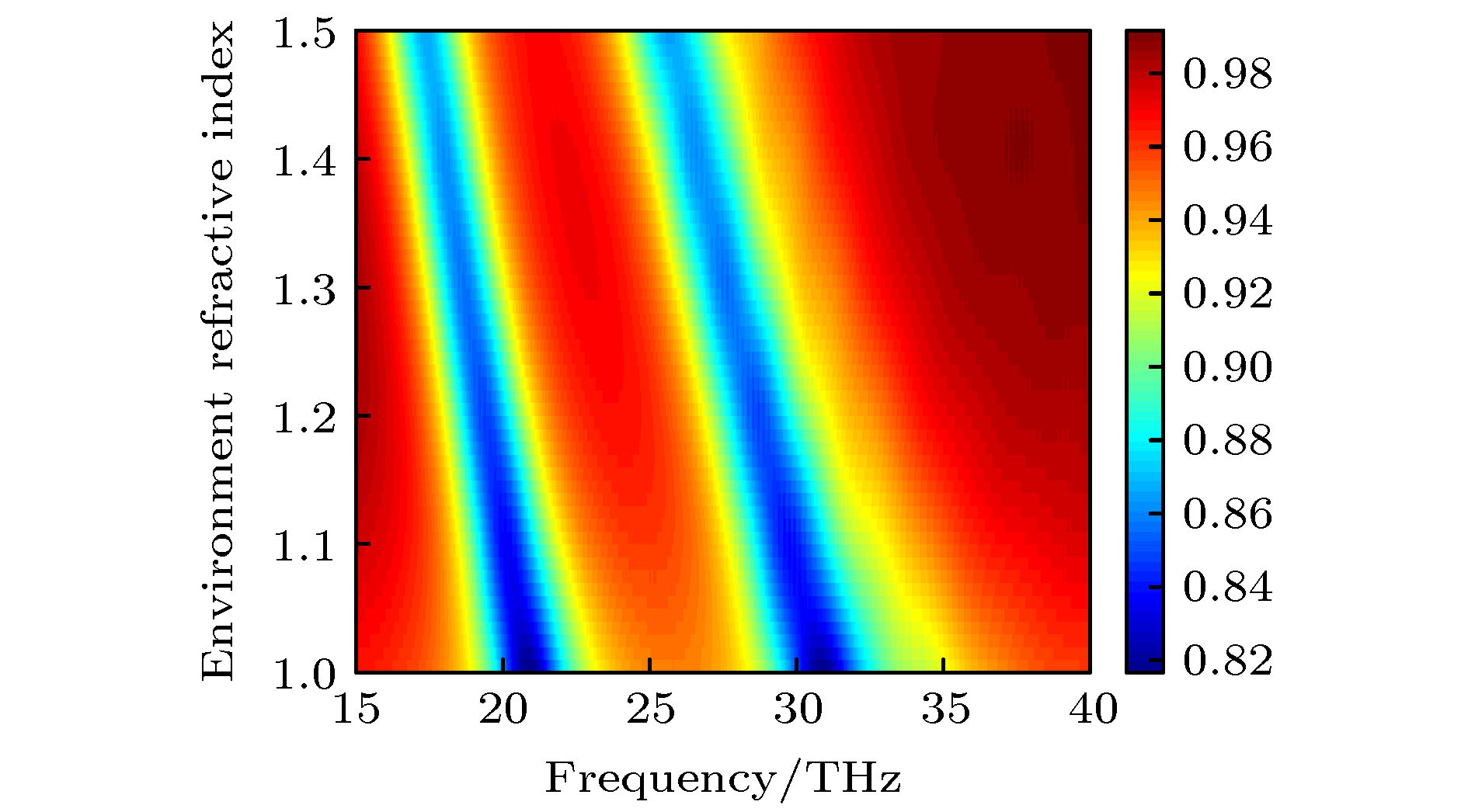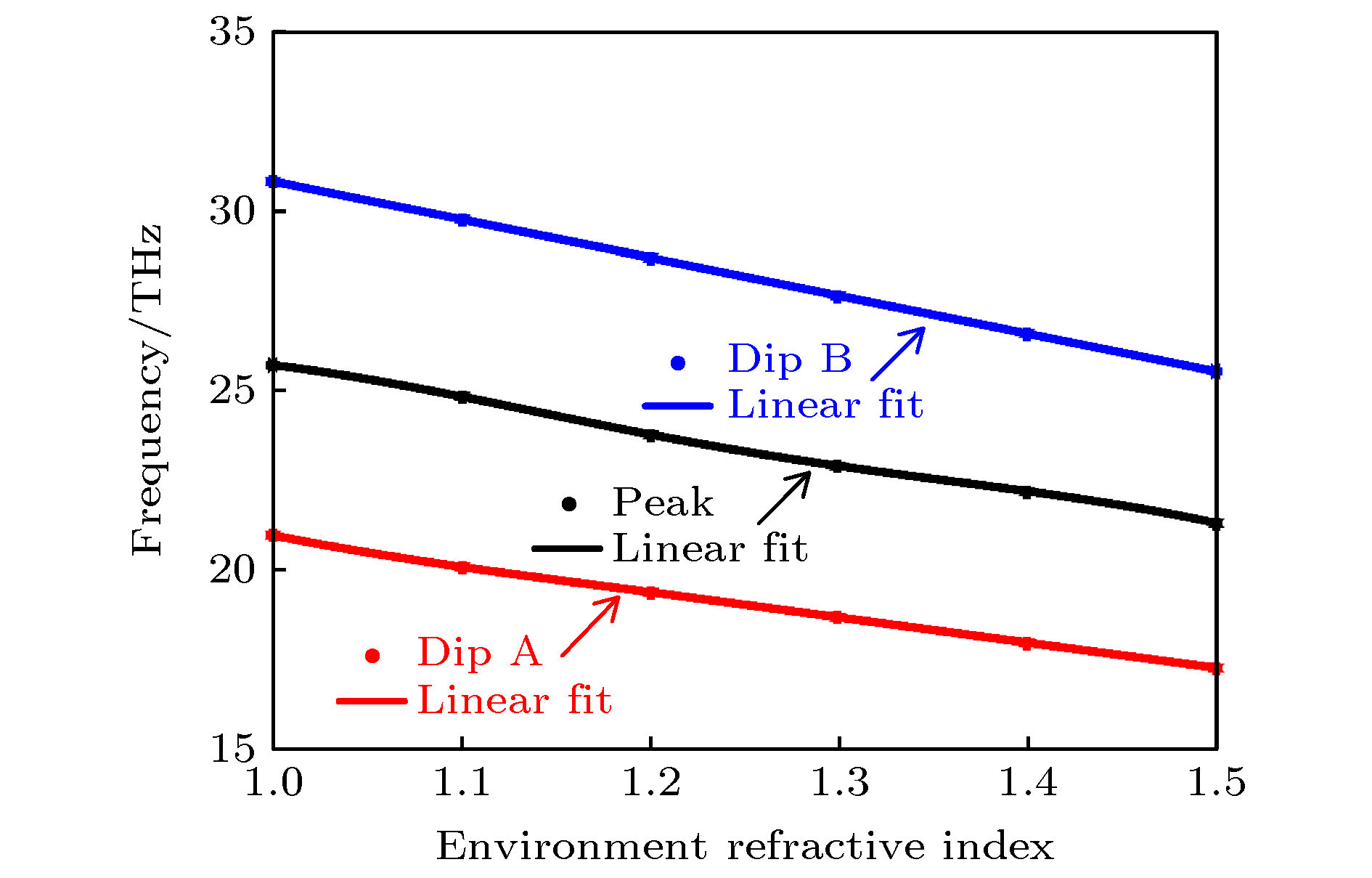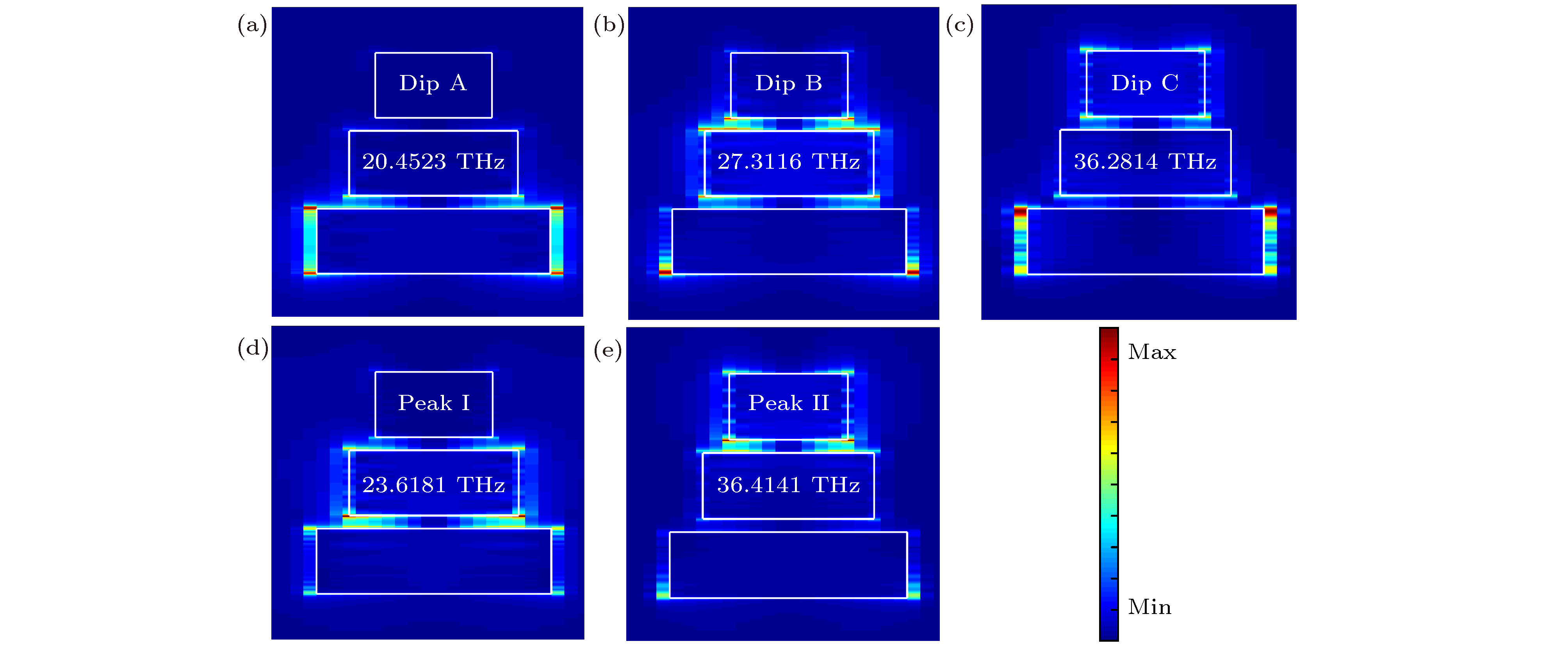-
In this paper, we propose three plasmon-induced transparency(PIT) hybrid models based on the coupling of black phosphorus (BP) nanorods. By using the bright-bright mode coupling between BP nanorods with different lengths, and according to the weak hybrid effect after the detuning of each bright mode unit, we can trigger the single-band, dual-band and triple-band PIT effects. Secondly, by changing the relaxation rate of BP, the resonant frequency can be adjusted in each PIT model. When the relaxation rate of BP changes from small to large, the resonance frequencies of the transparent windows in those three PIT models all increase and the blue shifts occur. In a single-band PIT model, when the relaxation rate of BP changes from $0.8 \times {10^{ - 14}}$ to$1.4 \times {10^{ - 14}}\;{{\rm{cm}}^{ - 2}}$ , the resonant frequency of transparent window increases 7.5628 THz. In a dual-band PIT model, under the same change of relaxation rate, the resonant frequencies of the two transparent windows increase 6.8593 and 9.1457 THz, at the same time, and the resonant frequencies of the three transparent windows in triple-band PIT model increase 6.8593, 8.7939 and 11.2563 THz respectively. In addition to the resonant frequency, the transmittance at the dip frequency in each model gradually decreases, and the depth of depression gradually increases.Finally, the sensing characteristics of the single-band PIT model are further studied. When the refractive index of the background changes from small to large, the dip frequency and the resonant frequency of the transparent window will be significantly red-shifted. The change of frequency is approximately linear with refractive index. The model has a sensitivity of 6110.6 (nm/RIU) and a figure of merit of 7.39 (1/RIU) which is better than the same type of sensor. This model provides a theoretical reference for designing the multiband filtering and ultrasensitive sensors. [1] Alp A, Ahmet A, Hatice A 2011 Nano Lett. 11 1685
 Google Scholar
Google Scholar
[2] Li H J, Wang L L, Liu J Q 2013 Appl. Phys. Lett. 103 211104
 Google Scholar
Google Scholar
[3] Liu N, Langguth L, Weiss T 2009 Nat. Mater. 8 9
 Google Scholar
Google Scholar
[4] Papasimakis N, Fu Y H, Fedotov V A 2009 Appl. Phys. Lett. 94 211902
 Google Scholar
Google Scholar
[5] Safavi A H, Mayer T P, Ch an 2011 Nature 472 7341
[6] Qin M, Wang L L, Zhai X 2018 IEEE Photonics Technol. Lett. 30 11
 Google Scholar
Google Scholar
[7] Wang H, Wang X, Xia F 2014 Nano Lett. 14 6424
 Google Scholar
Google Scholar
[8] Buscema M, Groenendijk D J, Blanter S I 2014 Nano Lett. 14 3347
 Google Scholar
Google Scholar
[9] Deng Y, Luo Z, Conrad N J 2014 ACS Nano 8 8292
 Google Scholar
Google Scholar
[10] Buscema M, Groenendijk D J, Steele G A 2014 Nat. Commun. 5 4651
 Google Scholar
Google Scholar
[11] Engel M, Steiner M, Avouris P 2014 Nano Lett. 14 6414
 Google Scholar
Google Scholar
[12] Du Y, Ouyang C, Shi S 2010 J. Appl. Phys. 107 093718
 Google Scholar
Google Scholar
[13] Prytz O, Flage L E 2010 J. Phys. Condens. Matter 22 015502
 Google Scholar
Google Scholar
[14] Qiao J, Kong X, Hu Z 2014 Nat. Commun. 5 4475
 Google Scholar
Google Scholar
[15] Wang X, Lan S 2016 Adv. Opt. Photonics 8 618
 Google Scholar
Google Scholar
[16] Huang Y, Liu Y, Fang C Z 2020 Opt. Mater. Express 10 14
 Google Scholar
Google Scholar
[17] Fo Q Q, Ling P, Chen X Y 2018 IEEE Photonics J. 10 4500709
[18] Liu Z Z, Aydin K 2016 Nano Lett. 1 1
[19] Nong J P, Wei W, Wang W 2018 Opt. Express 26 1633
 Google Scholar
Google Scholar
[20] Liu C, Li H J, Xu H 2019 J. Phys. D: Appl. Phys. 52 120137
[21] Li H, Wang L, Xing H Z 2019 Opt. Mater. Express 8 352
[22] Jia Z P, Huang L, Su J B 2020 Appl. Phys. Express 13 104027
[23] Deng Z L, Fu T, Zheng B 2016 Appl. Phys. Lett. 108 081109
 Google Scholar
Google Scholar
[24] Deng Z L, Deng H, Zhuang X 2018 Nano Lett. 18 2885
 Google Scholar
Google Scholar
[25] Deng Z L, Jin M K, Ye X 2020 Adv. Funct. Mater. 1 1910610
[26] Cen H F, Wang F Q, Liang R S 2018 Opt. Commun. 420 78
 Google Scholar
Google Scholar
[27] Hu X G, Yuan S, Armghan A 2017 J. Phys. D Appl. Phys. 50 025301
 Google Scholar
Google Scholar
[28] Wang J, Jiang Y N 2017 Opt. Express 25 5206
 Google Scholar
Google Scholar
[29] Liu Y, Zhong R B, Lian Z 2018 Sci. Rep. 8 2828
 Google Scholar
Google Scholar
[30] Liu C, Li H J, Xu H 2020 New J. Phys. 1 111962
-
图 2 BP原子结构和介电常数示意图 (a) BP错列原子结构示意图; (b)
${\varepsilon _{xx}}$ 实部随${n_{\rm{s}}}$ 的变化规律; (c)${\varepsilon _{xx}}$ 虚部随${n_{\rm{s}}}$ 的变化规律; (d)${\varepsilon _{yy}}$ 实部随${n_{\rm{s}}}$ 的变化规律; (e)${\varepsilon _{yy}}$ 虚部随${n_{\rm{s}}}$ 的变化规律Figure 2. Schematic diagrams of BP atomic structure and dielectric constant: (a) The staggered atomic structure of BP; (b) variations of the real part of
${\varepsilon _{xx}}$ with different${n_{\rm{s}}}$ ; (c) variations of the imaginary part of${\varepsilon _{xx}}$ with different${n_{\rm{s}}}$ ; (d) variations of the real part of${\varepsilon _{yy}}$ with different${n_{\rm{s}}}$ ; (e) variations of the imaginary part of${\varepsilon _{yy}}$ with different${n_{\rm{s}}}$ .图 5
${n_{\rm{s}}}$ 由$0.8 \times {10^{ - 14}}\;{\rm{c}}{{\rm{m}}^{ - 2}}$ 变化到$1.4 \times {10^{ - 14}}\;{\rm{c}}{{\rm{m}}^{ - 2}}$ 时, 单频段PIT模型透射谱变化规律及其与RTO拟合结果比较Figure 5. Variations law of transmission spectrum of single-band PIT model and comparison with RTO fitting results when the
${n_{\rm{s}}}$ is changed from$0.8 \times {10^{ - 14}}$ to$1.4 \times {10^{ - 14}}\;{\rm{c}}{{\rm{m}}^{ - 2}}$ 图 10
${n_{\rm{s}}}$ 由$0.8 \times {10^{ - 14}}\;{\rm{c}}{{\rm{m}}^{ - 2}}$ 变化到$1.4 \times {10^{ - 14}}\;{\rm{c}}{{\rm{m}}^{ - 2}}$ 时双频段PIT模型透射谱变化规律Figure 10. Variation law of transmission spectrum of dual-band PIT model when the
${n_{\rm{s}}}$ is changed from$0.8 \times {10^{ - 14}}$ to$1.4 \times {10^{ - 14}}\;{\rm{c}}{{\rm{m}}^{ - 2}}$ .图 11
${n_{\rm{s}}}$ 由$0.8 \times {10^{ - 14}}\;{\rm{c}}{{\rm{m}}^{ - 2}}$ 变化到$1.4 \times {10^{ - 14}}\;{\rm{c}}{{\rm{m}}^{ - 2}}$ 时三频段PIT模型透射谱变化规律Figure 11. Variation law of transmission spectrum of triple-band PIT model when the
${n_{\rm{s}}}$ is changed from$0.8 \times {10^{ - 14}}$ to$1.4 \times {10^{ - 14}}\;{\rm{c}}{{\rm{m}}^{ - 2}}$ .表 1 单频段PIT模型中dip A, dip B和peak的优值系数和灵敏度大小
Table 1. FOM and Sensitivity of dip A, dip B, and peak in the single-band PIT model.
FOM/RIU–1 Sensitivity/nm·RIU–1 dip A 2.385 6110.6 dip B 3.08 4018.7 peak 7.39 4806.8 -
[1] Alp A, Ahmet A, Hatice A 2011 Nano Lett. 11 1685
 Google Scholar
Google Scholar
[2] Li H J, Wang L L, Liu J Q 2013 Appl. Phys. Lett. 103 211104
 Google Scholar
Google Scholar
[3] Liu N, Langguth L, Weiss T 2009 Nat. Mater. 8 9
 Google Scholar
Google Scholar
[4] Papasimakis N, Fu Y H, Fedotov V A 2009 Appl. Phys. Lett. 94 211902
 Google Scholar
Google Scholar
[5] Safavi A H, Mayer T P, Ch an 2011 Nature 472 7341
[6] Qin M, Wang L L, Zhai X 2018 IEEE Photonics Technol. Lett. 30 11
 Google Scholar
Google Scholar
[7] Wang H, Wang X, Xia F 2014 Nano Lett. 14 6424
 Google Scholar
Google Scholar
[8] Buscema M, Groenendijk D J, Blanter S I 2014 Nano Lett. 14 3347
 Google Scholar
Google Scholar
[9] Deng Y, Luo Z, Conrad N J 2014 ACS Nano 8 8292
 Google Scholar
Google Scholar
[10] Buscema M, Groenendijk D J, Steele G A 2014 Nat. Commun. 5 4651
 Google Scholar
Google Scholar
[11] Engel M, Steiner M, Avouris P 2014 Nano Lett. 14 6414
 Google Scholar
Google Scholar
[12] Du Y, Ouyang C, Shi S 2010 J. Appl. Phys. 107 093718
 Google Scholar
Google Scholar
[13] Prytz O, Flage L E 2010 J. Phys. Condens. Matter 22 015502
 Google Scholar
Google Scholar
[14] Qiao J, Kong X, Hu Z 2014 Nat. Commun. 5 4475
 Google Scholar
Google Scholar
[15] Wang X, Lan S 2016 Adv. Opt. Photonics 8 618
 Google Scholar
Google Scholar
[16] Huang Y, Liu Y, Fang C Z 2020 Opt. Mater. Express 10 14
 Google Scholar
Google Scholar
[17] Fo Q Q, Ling P, Chen X Y 2018 IEEE Photonics J. 10 4500709
[18] Liu Z Z, Aydin K 2016 Nano Lett. 1 1
[19] Nong J P, Wei W, Wang W 2018 Opt. Express 26 1633
 Google Scholar
Google Scholar
[20] Liu C, Li H J, Xu H 2019 J. Phys. D: Appl. Phys. 52 120137
[21] Li H, Wang L, Xing H Z 2019 Opt. Mater. Express 8 352
[22] Jia Z P, Huang L, Su J B 2020 Appl. Phys. Express 13 104027
[23] Deng Z L, Fu T, Zheng B 2016 Appl. Phys. Lett. 108 081109
 Google Scholar
Google Scholar
[24] Deng Z L, Deng H, Zhuang X 2018 Nano Lett. 18 2885
 Google Scholar
Google Scholar
[25] Deng Z L, Jin M K, Ye X 2020 Adv. Funct. Mater. 1 1910610
[26] Cen H F, Wang F Q, Liang R S 2018 Opt. Commun. 420 78
 Google Scholar
Google Scholar
[27] Hu X G, Yuan S, Armghan A 2017 J. Phys. D Appl. Phys. 50 025301
 Google Scholar
Google Scholar
[28] Wang J, Jiang Y N 2017 Opt. Express 25 5206
 Google Scholar
Google Scholar
[29] Liu Y, Zhong R B, Lian Z 2018 Sci. Rep. 8 2828
 Google Scholar
Google Scholar
[30] Liu C, Li H J, Xu H 2020 New J. Phys. 1 111962
Catalog
Metrics
- Abstract views: 5605
- PDF Downloads: 104
- Cited By: 0
















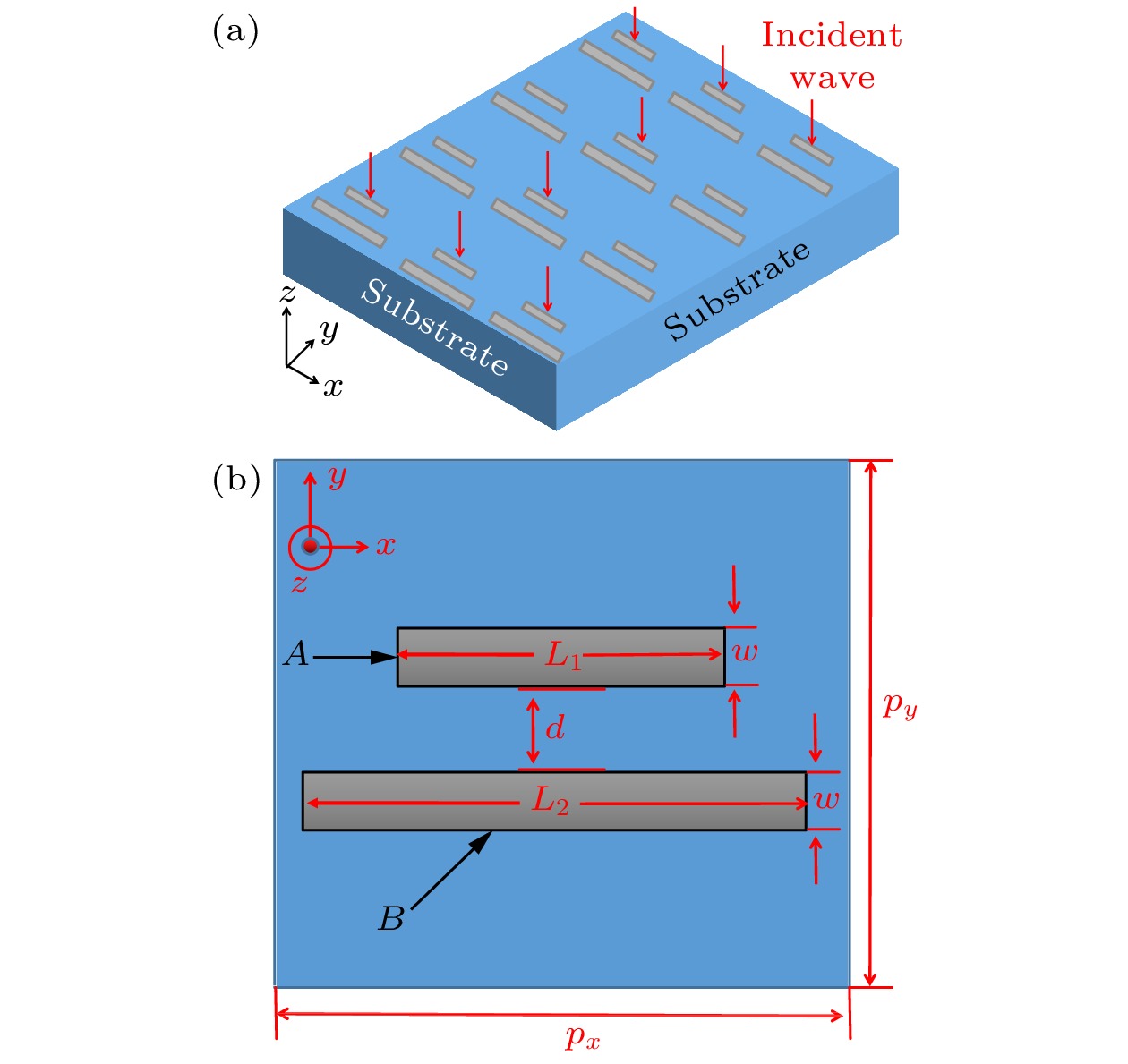
 DownLoad:
DownLoad:
